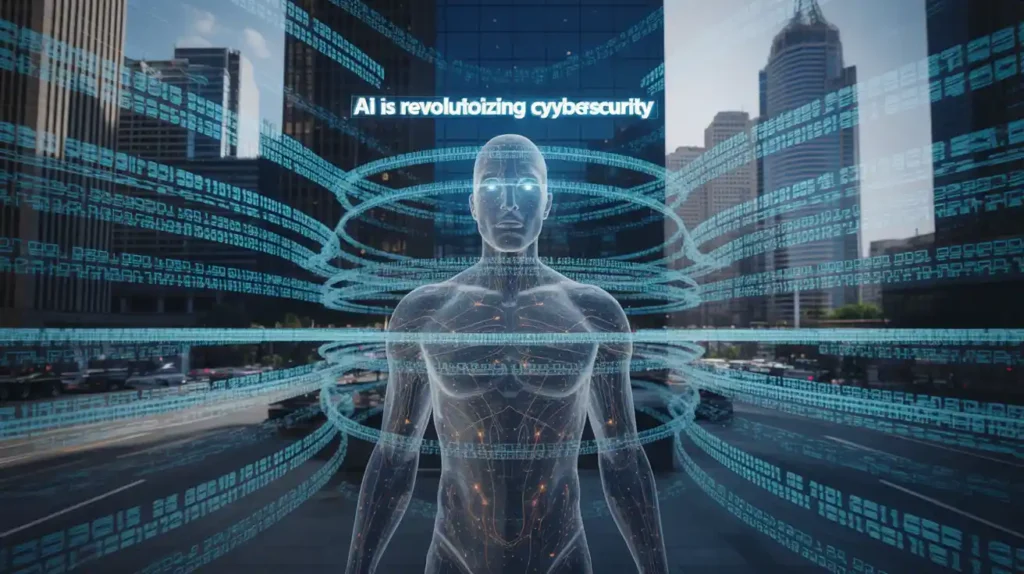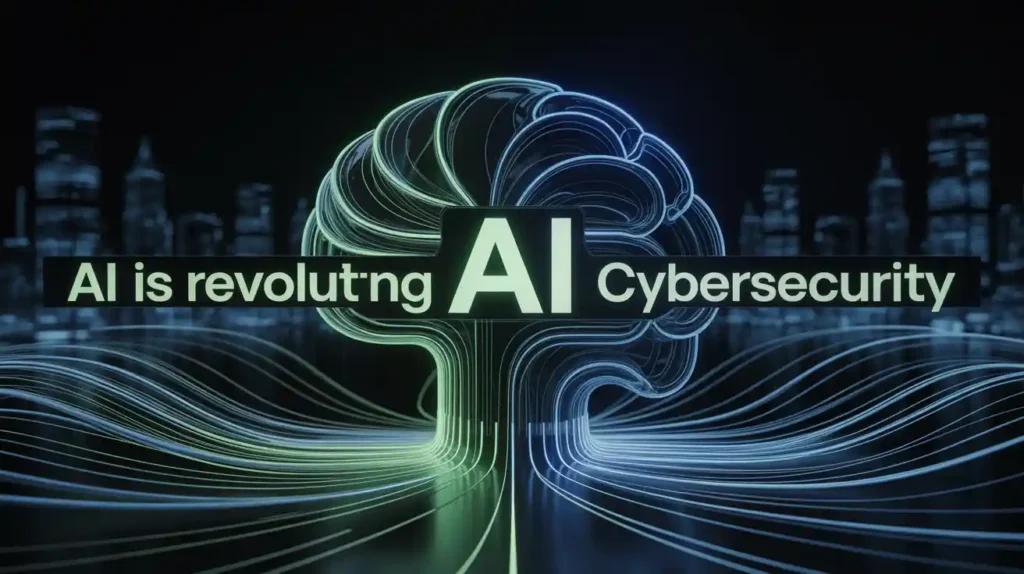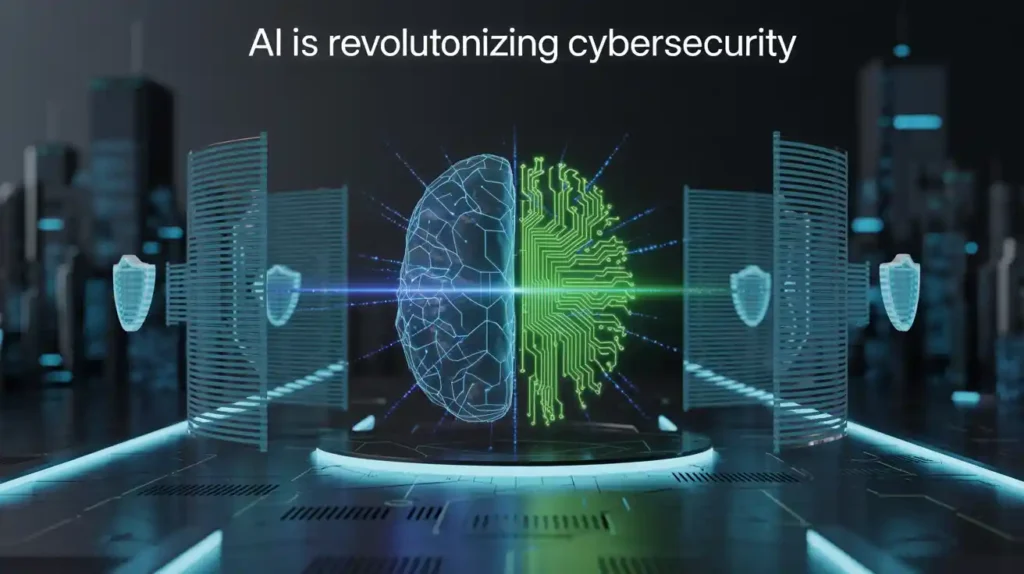In an age where cyberattacks are growing more sophisticated, frequent, and damaging, traditional cybersecurity measures are often no longer enough. The rise of artificial intelligence (AI) offers a transformative solution to this growing challenge. AI is not just enhancing cybersecurity—it’s revolutionizing it.
From predictive threat detection to real-time incident response, AI brings speed, accuracy, and adaptability to the front lines of digital defense. In this blog post, we explore how AI is changing the landscape of cybersecurity, the technologies driving this shift, the benefits and risks involved, and what the future holds.
The Growing Complexity of Cyber Threats
Cybersecurity threats have evolved far beyond simple viruses or email scams. Today, organizations face ransomware, phishing, zero-day exploits, insider threats, supply chain attacks, and advanced persistent threats (APTs). These attacks are more intelligent, targeted, and capable of bypassing static defense mechanisms.
As digital infrastructures become more complex—thanks to cloud computing, IoT devices, remote work, and increasingly interconnected systems—defending every vulnerability becomes nearly impossible using manual processes alone. Enter artificial intelligence.

What Makes AI So Effective in Cybersecurity?
AI’s strength lies in its ability to analyze vast datasets, recognize patterns, and make real-time decisions without human intervention. In cybersecurity, this means AI can detect threats faster than humans, identify anomalies that go unnoticed by rule-based systems, and adapt to evolving attack methods.
Here are key reasons AI is transforming cybersecurity:
- Speed and Scale: AI can process and analyze massive volumes of data at speeds far beyond human capabilities.
- Pattern Recognition: It identifies normal and abnormal behaviors across systems, making it easier to detect threats.
- Predictive Capabilities: AI can anticipate future attacks by analyzing past incidents and current trends.
- Automation: It enables automated threat detection and response, reducing the workload on security teams.
ALSO CHECK: How 5G and 6G Are Changing the Way We Use the Internet
Key Applications of AI in Cybersecurity
1. Threat Detection and Prevention
One of the most powerful applications of AI in cybersecurity is advanced threat detection. AI systems use machine learning algorithms to identify malicious behavior, often before any damage is done. They learn from past attacks and continuously evolve, improving accuracy over time.
For example, AI-powered Intrusion Detection Systems (IDS) and Intrusion Prevention Systems (IPS) can analyze network traffic in real-time and flag unusual patterns indicative of an attack.

2. Behavioral Analytics
AI can build a profile of what “normal” behavior looks like for users, devices, and networks. When a deviation from the norm occurs—such as a user logging in from an unusual location or accessing sensitive files at odd hours—the system can raise an alert or even shut down access automatically.
This is particularly useful for identifying insider threats and compromised accounts, which are notoriously difficult to detect using traditional tools.
3. Malware Analysis
Traditional antivirus software relies on known signatures to identify malware. AI goes a step further by using behavior-based detection. This means it can identify zero-day threats and polymorphic malware by observing how the software behaves, even if it’s never seen that malware before.
AI-driven sandboxes and endpoint protection platforms are leading the way in this area.
4. Automated Response
Time is critical during a cyberattack. AI enables Security Orchestration, Automation, and Response (SOAR) tools that can take immediate action based on threat intelligence—whether it’s isolating an infected device, blocking malicious IPs, or rolling back systems to a previous clean state.
This minimizes damage and buys time for human analysts to intervene where needed.
5. Phishing Detection
AI tools can analyze email content, URLs, and metadata to detect phishing attempts with impressive accuracy. Some systems can even simulate phishing attacks to test and train employees, thereby improving organizational resilience.
Natural language processing (NLP), a subfield of AI, is particularly effective in scanning emails for language patterns that resemble phishing content.
Benefits of AI in Cybersecurity
✅ Enhanced Accuracy
AI reduces false positives by using contextual understanding and pattern recognition, ensuring that only genuine threats are flagged.
✅ Real-Time Monitoring
Instead of periodic scans, AI enables continuous, real-time security monitoring—ensuring threats are caught the moment they arise.
✅ Reduced Human Error
With AI handling repetitive and complex tasks, the risk of human oversight is greatly minimized.
✅ Cost Efficiency
Although AI implementation can be expensive upfront, it reduces the need for large security teams and speeds up incident resolution, saving money in the long run.
The Challenges and Risks of AI in Cybersecurity
While AI offers immense promise, it’s not without its challenges:

1. Adversarial AI
Just as defenders use AI to protect, attackers are using it to bypass defenses. AI-generated phishing emails and deepfake content are just the beginning. This arms race between good and bad AI is one of the biggest concerns for cybersecurity experts.
2. Bias and Data Quality
AI systems are only as good as the data they’re trained on. Poor data quality or biased datasets can lead to flawed decision-making and overlooked threats.
3. Lack of Explainability
AI models, especially deep learning systems, are often black boxes. When an AI flags an activity as suspicious, security analysts may not understand why—leading to trust and accountability issues.
4. Skill Shortages
Implementing and maintaining AI systems requires specialized skills that many organizations currently lack, creating a dependency on third-party vendors.

Real-World Examples of AI in Action
- Darktrace: Uses AI to detect novel cyber threats by analyzing normal enterprise behavior. It mimics the human immune system to identify and respond to anomalies.
- IBM Watson for Cyber Security: Leverages cognitive computing to automate threat intelligence and assist analysts in detecting and mitigating threats.
- CrowdStrike: Combines AI with cloud-scale data collection to prevent and respond to endpoint breaches.
These platforms showcase how AI is being operationalized to create smarter, faster, and more adaptive cybersecurity infrastructures.
The Future of AI in Cybersecurity
The intersection of AI and cybersecurity is only going to deepen. In the near future, we can expect:
- More Autonomous Security Systems: Systems that not only detect and respond to threats but also learn from every incident.
- AI-Driven Security at the Edge: As edge computing grows, AI will be deployed closer to data sources for faster threat detection.
- Human-AI Collaboration: AI won’t replace security professionals but will empower them with better tools and insights to make critical decisions faster.
Organizations that embrace AI now will be better equipped to face the threats of tomorrow.
Conclusion
AI is revolutionizing cybersecurity—not by replacing human expertise, but by augmenting it. It brings speed, intelligence, and adaptability to a domain that desperately needs all three. As cyber threats continue to evolve in scale and complexity, AI is not a luxury—it’s a necessity.
By combining AI technologies with robust security frameworks, organizations can stay one step ahead of attackers and create a safer digital future for everyone.


bet ch bhu